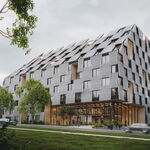I'm new here, hopefully this is an apt string to post. Immediate comment: Incredible photos Drum!
On the EMUs and ability to pull existing coaches. There's a number of factors to consider, including weight of the bi-level cars, affected acceleration, the couplers, the braking system, the triple-phase Head End supply, and that they'll still be needed for outer regions of the system. From what I can reason, they will have to be loco hauled with the necessary ancillaries supplied by those locos.
This raises the point though on what the EMUs are going to be. Reading back through the various strings, I see the Karlsruhe model is well-discussed, but further to that, the Siemens S70 for one, as used extensively in the US, called the Avanto in Europe, specifically the Paris RER, is used dual voltage on both high voltage 25kV AC and low 1.5kV DC. That latter voltage can easily be spec'd to the 750V DC used for LRTs in Toronto. The S-70 is commonly coupled into Tram-Trains (again, as discussed previously in these threads) or as singles and duals, cab each end or otherwise, for street running. Whether a variant of the present Bombardier model for the LRTs can be altered likewise for a limited number is a good question some readers might have the answer for. The flexibility offered would put a whole other scenario on the table for routing and do-ability of RER inter LRT for Toronto. The Scarborough SRT could instantly become a connection for 'Tram-Trains' both in Scarborough, and to connections downtown.
And to add a further, albeit radical factor: Electrification has been presumed to be at 25kV AC, 60 cyles. Although the traction transformer weight is decreasing with time and better components, it's still a substantial mass to accelerate and brake, not to mention other aspects of regulation during heavy loading. Some aspects of low voltage DC lines still have an advantage, especially with switching type regulation. Excellent discussion here:
http://www.railjournal.com/index.ph...ion-choices-overhead-ac-vs-third-rail-dc.html
Not only would DC mean significantly less weight w/o the traction xfrmr, it would mean greater inter-operability with LRTs, and a better price by quantity pricing.
Thoughts?














